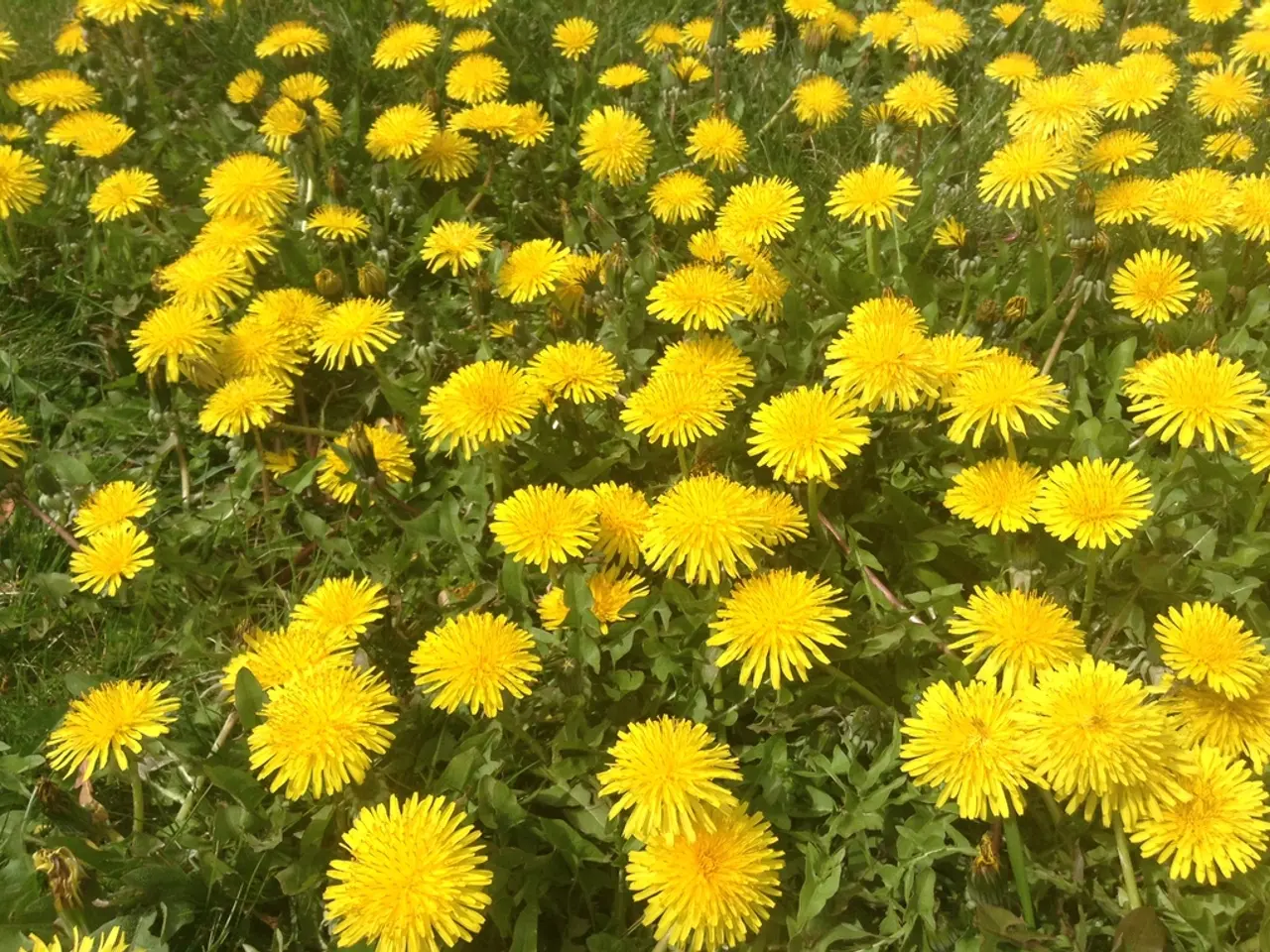Cultivation Instructions for Phlox: Learn How to Nurture Phlox Flowers for Stunning Fragrant Blooms
In the vibrant world of gardening, Garden Phlox (*Phlox paniculata*) stands out as a tall, clump-forming perennial that adds a splash of colour to sunny perennial borders. Unlike other phlox varieties, Garden Phlox grows between 24 to 60 inches (2 to 5 feet) tall and thrives best in full sun to partial shade.
Sunlight is essential for Garden Phlox, with at least 6 hours of sun daily needed for optimal flowering. This perennial prefers cooler temperatures and is hardy in USDA zones 4-8 (some sources mention as hardy as zone 3).
When it comes to soil, Garden Phlox prefers neutral to slightly acidic, well-draining soil rich in organic matter. A 2 to 3-inch (5 to 7.5 cm) layer of mulch can be applied around Garden Phlox to help the soil hold moisture. Good drainage and air circulation among plants are key in preventing common fungal diseases like rot and powdery mildew.
Watering is crucial for Garden Phlox, with the plant requiring weekly watering for the first few weeks and consistent irrigation thereafter. A suggested watering rate is 1 inch (2.5 cm) per week during summer, focusing on watering the soil rather than the foliage. Routine watering is essential during drought or warm weather.
Garden Phlox blooms from early summer well into fall, offering a long flowering period that makes it a popular choice for sustained colour in borders. Deadheading after the flowers fade keeps the plants looking tidy and prevents the flowers from dropping seeds and spreading.
Garden Phlox can be propagated in several ways, including from seeds, cuttings, or division. Stem cuttings can be taken in spring, with the removal of several short segments. Rooting plant cuttings should be prompt, taking place in as little as 1-2 weeks. Division of Garden Phlox plants can be done in spring, just before growth resumes for the season.
Fertilizing Garden Phlox can be done with compost or a light application of 10-10-10 fertilizer at planting time, and again just before the flowers open. A well-balanced, slow-release feed in spring, like Espoma organic fertilizer from Ace Hardware, is suggested. Fertilizing later will also help plants establish a strong root system in preparation for winter, with another fertilization after the flowers fade potentially resulting in another flush of flowers.
Pests like mites and aphids may also frequent Garden Phlox, feeding on the sap of tender foliage. Good hygiene practices, such as regular inspection and removal of affected leaves, can help manage these pests.
Varieties like 'Jeana', 'Bright Eyes', 'David', and 'Laura' are available for purchase, offering gardeners a range of choices to suit their specific needs and preferences. With proper care, Garden Phlox can be a rewarding addition to any garden, providing a burst of colour and a delightful fragrance throughout the summer and fall seasons.
- Garden Phlox, a popular choice for sustained colour in home-and-garden borders, is hardy in plant hardiness zones 4-8 and thrives well with a lifestyle that includes at least 6 hours of sun daily, neutral to slightly acidic, well-draining soil rich in organic matter, and routine watering during drought or warm weather.
- When planting or selecting varieties like 'Jeana', 'Bright Eyes', 'David', and 'Laura' in the home-and-garden setting, it's essential to consider their preference for cooler temperatures, good drainage, and air circulation, as well as the suitable use of compost or light fertilizer to promote optimum growth and flowering.




